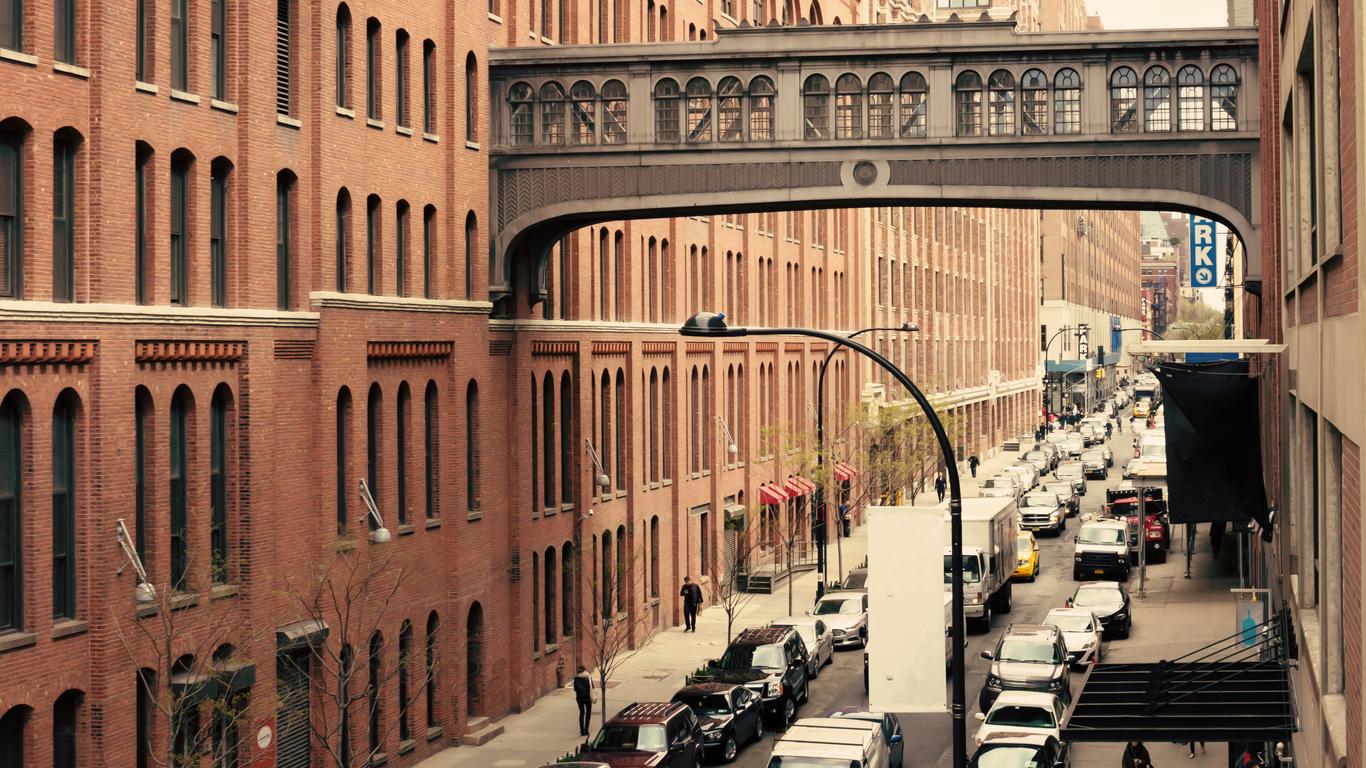Sprawling along the Hudson River on the west side of Manhattan, Chelsea has long been an artistic hub for New York City and a centre for its LGBTQ population. It’s squeezed between the Meatpacking District and Greenwich Village to the south, the Flatiron district to the east and the neighbourhood of Hell’s Kitchen to the north.
The High Line is built along an abandoned, elevated railroad track, and is the best way to get acquainted with Chelsea, offering fantastic views across the water, industrial landmarks and public artworks along its route. It passes by the former Nabisco factory’s loading dock, now transformed into the foodie’s heaven of the Chelsea Market, with around 30 food stalls and restaurants serving up gourmet and artisan produce. It was during the 1990s that galleries really started mushrooming across Chelsea, including high profile names like the Gagosian, Gladstone and Jack Shainman galleries, and the best way to explore what’s currently showing is to pick up the Chelsea Gallery Map. Alternatively, head to the Rubin Museum of Art which focuses on Himalayan art or the Graffiti Research Lab for a more contemporary approach. Chelsea also boasts leading performing arts venues, including the dance emporium of the Joyce Theatre and the theatrical institute at The Kitchen, as well as the arena at Madison Square Gardens which hosts big-name music and sporting events. Perhaps the neighbourhood’s most famous landmark is the 19th century Chelsea Hotel at 222 West 23rd Street, noted for its celebrity residents.
Chelsea is well serviced by both buses and the subway, with stations along its perimeter and 23rd Street, as well as a train station for the Flushing rail line newly opened at 34th Street-Hudson Yards. The grid-pattern of Chelsea’s streets and relatively compact size of the neighbourhood make it easy to explore on foot, with the High Line a scenic way to get from A to B.
Chelsea was named after the estate of British Major Thomas Clarke in the mid 18th century, which he in turn named after a retirement home for soldiers in London, the Royal Hospital Chelsea. His grandson, Clement Clarke Moore, was responsible for dividing the property and selling off lots to wealthy New Yorkers in the early 19th century, transforming it into the residential area seen today.





